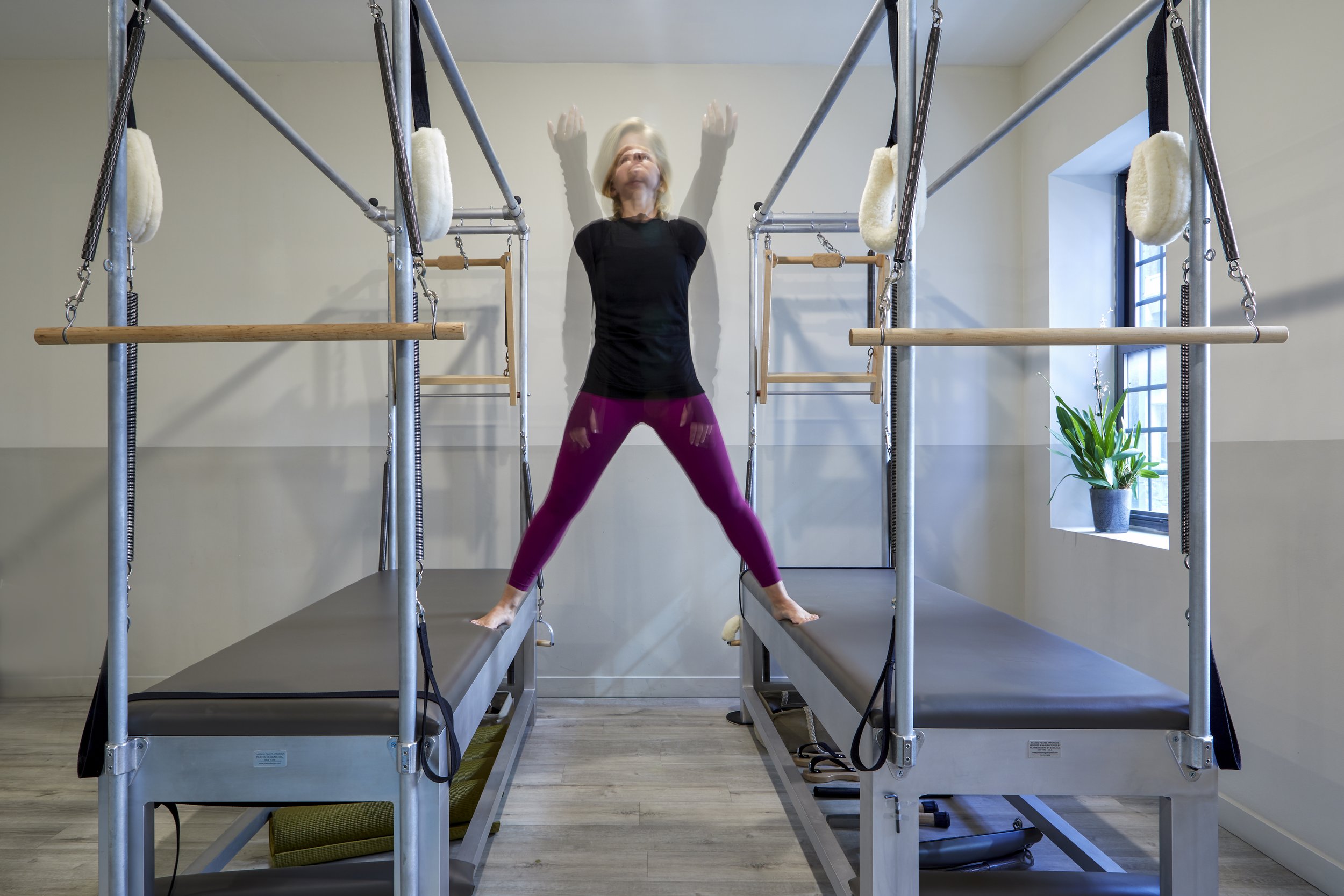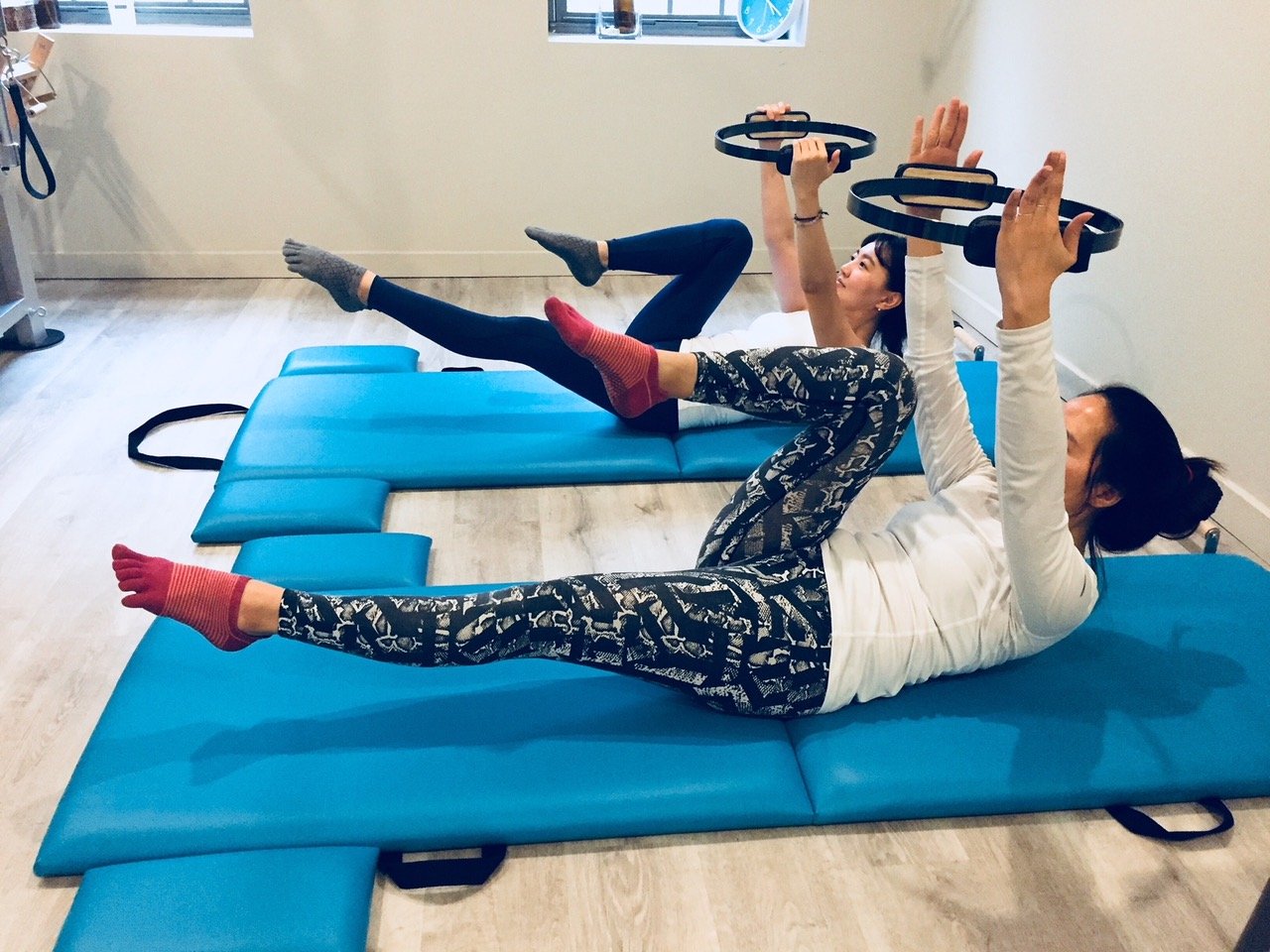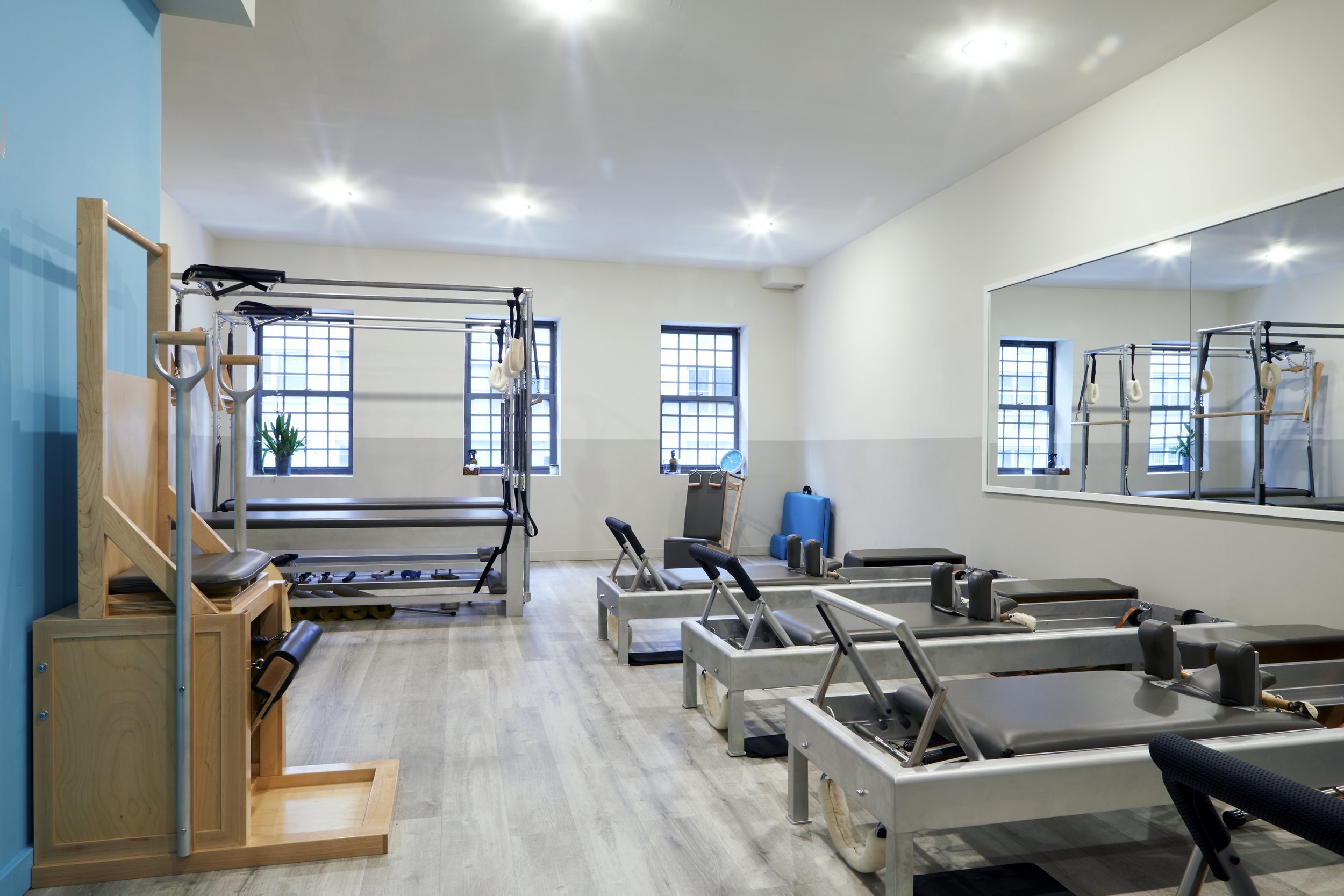
Build Your Pilates PowerHouse
Heal Your Pain &
Feel Younger Longer
Strengthen your Pilates Powerhouse in our bright and sunny studio with personalized training to help you become your best self.
-

Principles of Pilates
CENTERING: “Balance of body and mind”CONCENTRATION: “Correctly executed...to the point of subconscious reaction, these exercises will reflect grace and balance in your routine activities.”
CONTROL: “Our muscles should obey our will"
PRECISION: "When all your muscles are properly developed...perform your work with minimum effort and maximum pleasure"
FLOW: "Through proper repetition...progressively acquire...true rhythm and control...renewed mental vigor"
BREATH: “Breathing is the first act of life...lazy breathing creates a deposition of dead germs...the act of correct breathing will result in the bloodstream receiving its full quota of oxygen and thus ward off undue fatigue”
Return to Life Through Contrology and Your Health, Joseph H. Pilates (1945)
-

Personalized Sessions
Sessions offered In-Studio and Online (55mins)
Single with Owner $195
Single with Senior Instructors $130
Program of 5 Solo Sessions with
Senior Instructor $625
Program of 10 Solo Sessions with
Senior Instructors $1200
Single sessions have a 3 month expiration from purchase date
Programs have a 6 month expiration from purchase date
All sessions have a 24 hour cancellation policy
-

Personalized Sessions
Sessions offered In-Studio and Online (55mins)
Single Duet session with Owner $150 (per client)
Single Duet Session with Senior Instructor (per client) $95
Program of 5 Duet Sessions with Senior Instructor $450
Program of 10 Duet Sessions with Senior Instructor $850
Single sessions have a 3 month expiration from purchase date
Programs have a 6 month expiration from purchase date
All sessions have a 24 hour cancellation policy
-

Mat Classes In Your Home
Weekly Online Mat Series with Norma-Jean (55min)
Single Session $45
Five sessions $200
Ten sessions $310
Single sessions have a 3 month expiration from purchase date
Programs have a 6 month expiration from purchase date
All sessions have a 24 hour cancelation policy
-

Meet Your Instructors
Pilates is an integrative approach of using the core for a leaner, stronger and more balanced body. Each apparatus challenges the body and mind and with over 500 exercises to choose from your fitness you will never plateau.

